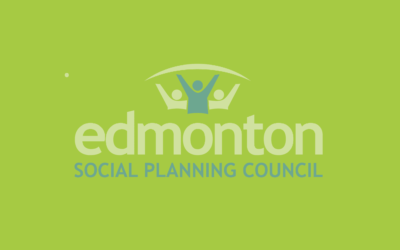Blog: Budget 2022 an Insufficient Response to the Mental Health and Addiction Crisis

Written by: Vibhu Kher
The Alberta government spends an annual $1.7 billion on mental health and addiction services. Budget 2022 adds another $20 million to support the Opioid Dependency Program along with recovery-oriented programs, including healthcare spending towards ICU beds and an expansion of the mental health intensive care unit. These investments allow Alberta to address the opioid crisis through a recovery-mode system where support services are offered after or amidst individuals looking to recover from using opioids all together.
What remains omitted and unaddressed is the harm reduction programs and initiatives in Alberta. Furthermore, the substance abuse crisis in Alberta is reaching a peak higher than before the pandemic and during lockdown. There seems to be a larger focus on beliefs about recovery strategies than an individualized treatment plan for Albertans struggling with limited options.
UofA Researcher Elaine Hyshka highlights the need for hospitals to carry harm reduction supplements and strategies like supervised injection sites and naloxone kit services for overdose victims. In conjunction, survey respondents in the Alberta Health Services report in 2018 identified a need for more provincial coordination and alignment of services with harm reduction initiatives and strategies. This has also been unaddressed till date.
Alberta Opioid Crisis
According to the substance use surveillance data, the rate of drug poisoning in Alberta has increased exponentially between 2018 and 2021. December 2021 had 178 deaths alone, which is higher than the annual death rate in the previous years. The annual total for 2021 was 1600 deaths due to opioids. This suggests, there is a significant need for intervention and harm reduction programs that compliment recovery programs.
The purpose of harm reduction stems from understanding the causes of drug use, it is about ‘meeting drug users where they are at’ and recognizing them as part of the community. Harm reduction allows observers and healthcare professionals to understand the deeply rooted issues of the individual as opposed to an over reliance on surface level policy changes.
Alberta currently has four major harm reduction initiatives in place:
- Community based naloxone program
- Opioid Dependency Program
- Safeworks Harm Reduction Program and,
- Supervised consumption sites (Province-wide)
Out of these, only the Opioid Dependency Program (OPD) is being expanded as part of Budget 2022. The program offers a medicated treatment plan for opioid users along with psychosocial support complimented with oral opioid agonist treatment. Access to the program is free; however, medical prescriptions are subject to costs identified by individual pharmacies. This limits access for vulnerable and marginalized populations who do not have health coverage or reliable income.
Initiatives in British Columbia
In contrast, while British Columbia has the highest opioid cases in Canada; their harm reduction programs are noteworthy. British Columbia introduced an Oral Hydromorphone Pilot project this year, which provides low-barrier access to the medication that is used to relieve pain for opioid dependent patients. This is similar to the ODP in Alberta however, access varies.
This treatment is covered at 100% depending on drug plans offered by B.C. one would be, Pharmacare Plan G which covers 100% of psychiatric medications depending on physician outlined needs of patients. This plan is accessible to vulnerable populations and unemployed residents. B.C. takes a step forward by offering these services to marginalized and vulnerable populations where payment of drugs is a barrier to treatment.
On the other hand, in Alberta there is only the OAT Gap Coverage which provides coverage until a health benefit plan is confirmed by the individual. This can be a barrier for Albertans who are unable to afford a monthly premium-based benefit plan. B.C. also offers a higher number of Overdose Prevention Sites province wide. Whereas Alberta has confirmed closure of Supervised Consumption Site in Lethbridge and more to come.
Further Action Needed by Provincial Government
A prioritization on recovery-based programs saturates the differences in treatment approaches between recovery-based and harm reduction methods. It paints a picture that recovery-based programs are an ideal way of ‘getting better’ from addictions and mental health illness. It further isolates and marginalizes populations that are dependent on opioids where recovery-based programs may not help.
Harm reduction initiatives are important because they allow individuals to feel part of the community. Furthermore, the harm reduction programs save large amounts of money in surgeries at later times, preventing accumulated high costs to the healthcare system. A robust mental health and addictions system that covers recovery and harm reduction components is called upon to offer treatment services that are catered to individual needs. Consequently, the current time is more crucial than before considering the rising death rate and opioid use rates in Canada.
Vibhu Kher is a post-graduate Master of Public Policy student currently completing her practicum with the Edmonton Social Planning Council.


